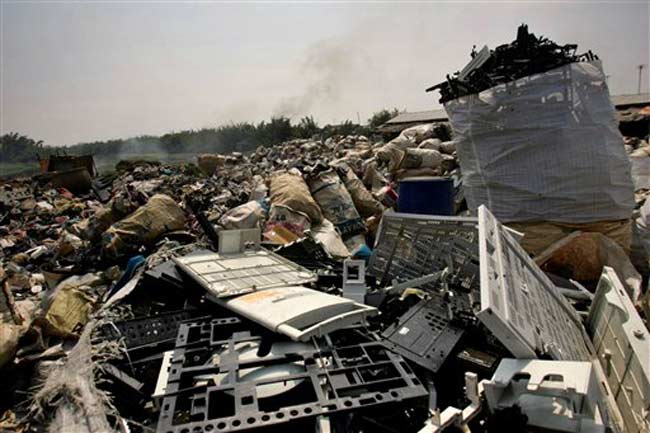Global E-Waste Problem ‘More Dire’ than Realized

Developing nations are generating more and more electronic waste, even as they remain a dumping ground for wealthier nations' old computers, cell phones and refrigerators, according to a new United Nations report.
This so-called e-waste contains toxic materials that threaten both human health and the environment. To combat the problem, the United Nations Environment Programme, which issued the report, recommends new recycling technology and policies to turn trash into raw materials for manufacturing.
The report "paints a more dire picture than probably many of us have realized," Odadele Ogunseitan, a professor of social ecology at UC Irvine, told TechNewsDaily.
Experts have long known that developed nations export e-waste to the developing world for recycling, often under unsafe circumstances, Ogunseitan said, but the new report illuminates another problem.
"What this shows is there's also a huge surge in locally-generated e-waste in those countries that will need to be dealt with," he said.
The report looked at 11 developing nations, including China, which produces 2.3 million tons of e-waste per year. That puts it second only to the United States, which produces 3 million tons each year.
Cottage industries have sprung up in many developing nations to scavenge the recyclable and precious metals inside the waste. Many of these "informal" industries take few precautions to protect workers from hazardous materials like lead and mercury in the waste.
Sign up for the Live Science daily newsletter now
Get the world’s most fascinating discoveries delivered straight to your inbox.
In the countries studied, televisions made up the largest chunk of the e-waste stream by weight. China alone tossed more than one million tons of televisions in 2007. The 11 countries in the report also threw out more than a million tons of refrigerators and close to 700,000 tons of personal computers.
Those numbers are expected to rise. The report predicts that the number of computers tossed in India will increase 500 percent between 2007 and 2020. By 2020, the number of computers thrown out in South Africa and China will be up 200 to 400 percent. Trashed mobile phones will increase by 7-fold in China and 18-fold in India, while television e-waste in those countries may double.
To boost e-waste recycling, the UNEP recommended the development of large, state-of-the-art recycling centers and "ambitious" regulations on the collection and handling of old electronics.
This approach would likely solve some of the environmental and health problems associated with informal recycling centers.
However, the UN should not view informal recyclers as a barrier to progress, but as businesses in their own right, said Josh Lepawsky, a professor of geography at Memorial University in Newfoundland.
Although "there's no denying" that e-waste is toxic, Lepawsky said, it isn't clear that the UN's solutions would create new jobs to replace the ones lost if the informal system were shuttered.
"This is, for a lot of people, a livelihood strategy, a survival strategy," Lepawsky said.
The report was co-authored by United Nations University, the Swiss EMPA federal laboratories and Belgian materials technology business Umicore.

Stephanie Pappas is a contributing writer for Live Science, covering topics ranging from geoscience to archaeology to the human brain and behavior. She was previously a senior writer for Live Science but is now a freelancer based in Denver, Colorado, and regularly contributes to Scientific American and The Monitor, the monthly magazine of the American Psychological Association. Stephanie received a bachelor's degree in psychology from the University of South Carolina and a graduate certificate in science communication from the University of California, Santa Cruz.









